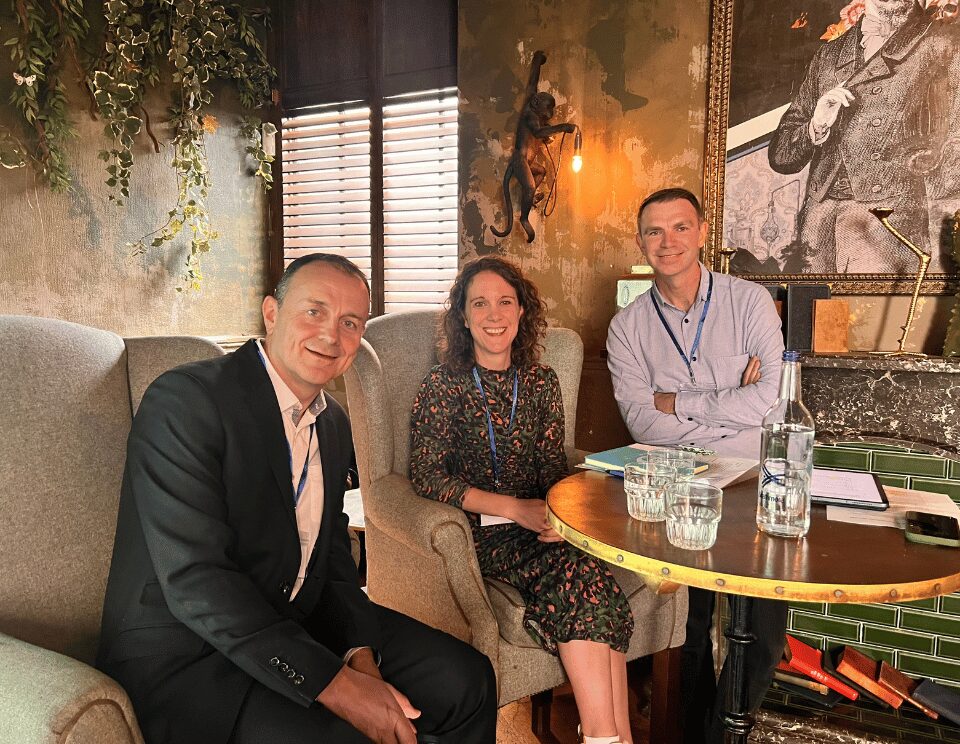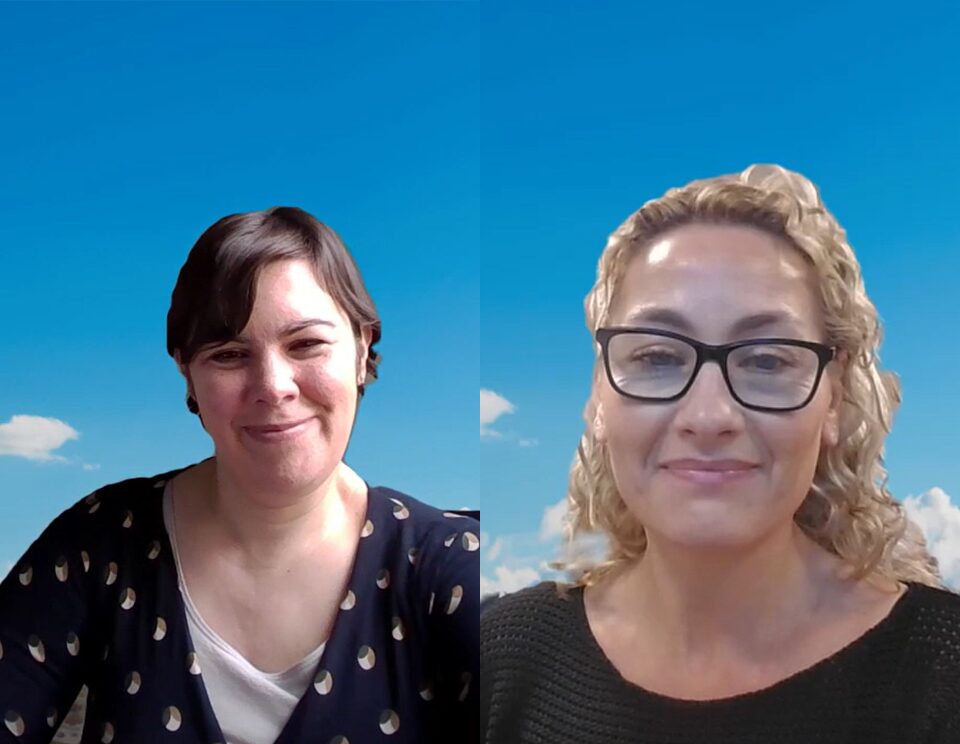The pace of innovation is relentless, and today’s R&D teams must be agile not just to keep up, but to stay ahead. This was the focus of Blue Yonder’s recent breakfast event in Leeds, where R&D leaders from a range of industries came together to explore how to embed real agility into their innovation processes.
Led by Blue Yonder’s Managing Director Richard Heath, the discussion featured insights from Andy Butterworth, VP of R&D at Croda, and Michelle Roberts, an independent brand strategist with experience at Nestlé and Kimberly-Clark. Together, they unpacked the core challenges and opportunities shaping the future of R&D. Here are the main key R&D themes, with practical insights and fresh perspectives, to help you rethink your R&D strategies and stay ahead…
1. AI + human expertise: smarter together
AI was a recurring theme, but not as a silver bullet. Rather, the consensus was clear: AI’s real power lies in its ability to support (not replace) human insight.
As Andy put it, “Everyone says AI is the answer – and then we all go back and say, ‘What was the question?’” That distinction matters. AI is helping teams move faster, especially by handling data collation, summarisation, and repetitive analysis. But trust and interpretation still rest with people.
Michelle echoed this: “It gives you a steer, but you still need someone with context to decide if that’s meaningful.” AI is enhancing the research process, but it’s human judgement that turns outputs into impact.
The challenge now isn’t whether to use AI – it’s how to use it well. That means knowing where to automate, when to step in, and how to combine tools with real strategic thinking.
2. Agility isn’t just speed – it’s speed x flexibility
“Everyone talks about going faster,” Richard observed, “but are we just rushing in the wrong direction?”
Both Andy and Michelle challenged the myth that agile equals fast. Real agility is about responsiveness – the ability to move quickly when it makes sense, and pause when depth is needed. “You can be fast and still go the wrong way,” Andy said. “Agile means testing, learning, pivoting. It’s not just about speed – it’s about flexibility.”
Michelle reinforced this with a critical reminder: “Speed isn’t equal all the way through the journey. If you’re doing something genuinely new, you need to slow down at the front.”
The message is clear: Agile done well isn’t just a process – it’s a mindset. It means empowering teams to make decisions and creating room to adapt, rather than simply cutting timelines.
3. Innovation doesn’t do standard
Standardisation can streamline – but when it comes to breakthrough innovation, rigidity kills progress. Bold ideas won’t thrive if they’re squeezed through old templates.
“We hear businesses say, ‘We want something disruptive’ – and then test it with the same benchmarks they use for line extensions,” said Michelle. The result? Innovation dies before it even gets a chance.
Andy shared a real-world example: “In my new role, I’m not trying to fix R&D – the science is great. The issue is that we’re not always working on the right things. Innovation starts by asking: what’s the problem we’re trying to solve? If you skip that step, the rest doesn’t matter.”
The practical takeaway? Give genuinely new ideas a different runway. That includes different research criteria, different timeframes – and, crucially, different expectations.
4. A cross-generational opportunity
As AI-native graduates enter the workforce and experienced leaders manage complex pipelines, there’s a moment of friction – and huge potential.
Ben (Ex-Unilever, now Director of Innovation at Aire Innovations), a contributor in the pre-recorded video, noted the challenge of integrating machine learning into R&D teams where digital skills vary wildly. The opportunity? Pair digital fluency with business wisdom.
“People coming out of university have the skills,” said Ben. “But others don’t even know what questions to ask.” That’s not a failure – it’s a call for collaboration.
Andy summed it up: “We need to connect people. Agile structures alone aren’t enough. We’ve got to build relationships and make sure people – especially the new ones – know who to talk to. That’s what keeps decisions moving.”
5. Inclusive and sustainable innovation is non-negotiable
Beyond tech, the panel reminded us that the values behind innovation matter more than ever. Rozenn (Ex-Reckitt, now Product Experience Research Manager at Bayer), another video contributor, spoke about the rising demand for products aligned with consumer values – health, sustainability, and ethical sourcing.
And it’s not just about the products. Research itself must evolve to be less wasteful and more inclusive. That means smarter sampling, lower-footprint methodologies, and more intentional design.
Inclusivity also means stakeholder engagement. As attention spans shrink and data noise grows, research needs to work harder to land. “We’ve had to shift towards more interactive and visually engaging methods,” Rozenn explained. “Real-time platforms and immersive storytelling are helping us keep stakeholders involved and invested.”
6. Method doesn’t matter – impact does
It’s easy to get caught up in methodological debates. But the panel made one thing clear: clients don’t buy methods – they buy movement.
“Don’t spend six weeks on the perfect research method if what you need is a decision by Friday,” said Hannah (Innovation Manager at Blue Yonder). That’s the principle behind Blue Yonder’s new SprintAI tool – combining automation with researcher oversight to get directional insight in days, not months. The new agile research solution, has been developed to empower R&D teams to make smarter decisions, accelerate timelines, and deliver tangible results with confidence.
As Michelle noted, “You can’t just project-manage a business into innovation. It needs energy, ownership, and clarity of purpose.” The best methods are those that unblock action – not delay it.
7. Focus is a strategic necessity
With all the tools and tactics, the panel returned again and again to one idea: clarity. “It’s not about being right – because we don’t always know what the right answer is,” Andy said. “It’s about giving people something clear to aim at.”
That clarity unlocks focus. It helps teams stop trying to do everything – and start doing the right things. Michelle shared a familiar challenge: “Everyone wants the innovation to grow the brand, drive sustainability, appeal to a new user, be cost-effective, and improve health. You can’t do it all in one go. Decide what the job is – and do that well.”
Focus isn’t limiting. It’s liberating.
Final thought: innovation is human work
New tech will keep coming. Tools will evolve. But as the session closed, one message stood above the rest: the future of R&D isn’t about replacing people – it’s about enabling them.
“Clarity, curiosity, connection,” said Michelle. “Those are human things. And that’s what great innovation is built on.”
Whether you’re speeding up or slowing down, testing new tech or doubling down on strategy – the role of insight is to keep asking the right questions, guiding decisions, and bringing humans back to the heart of the process.
Because in the end, innovation is not just what you make. It’s how you move.
To learn more about SprintAI or join a future Campaign for Real Innovation session, get in touch with Richard by email at [email protected].







Stay In Touch